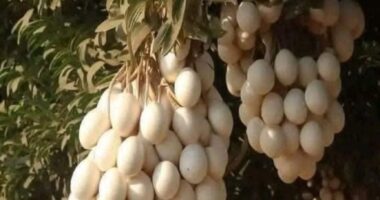The vibrant and captivating Red Ginger Plant (Alpinia purpurata) stands out as a true gem among the botanical wonders. With its striking appearance and numerous benefits, this plant has found its way into gardens, homes, and herbal remedies. In this article, we’ll delve into the captivating world of the Red Ginger Plant, exploring its origins, characteristics, cultivation, and the many ways it enhances our lives.

Nature’s palette is enriched by the dazzling presence of the Red Ginger Plant. Originating from the lush rainforests of Malaysia and Indonesia, this tropical beauty has captivated the hearts of garden enthusiasts, herbalists, and artists alike. Its vibrant red cone-shaped inflorescences, resembling a torch, have earned it a special place in various cultures and traditions.
Introduction
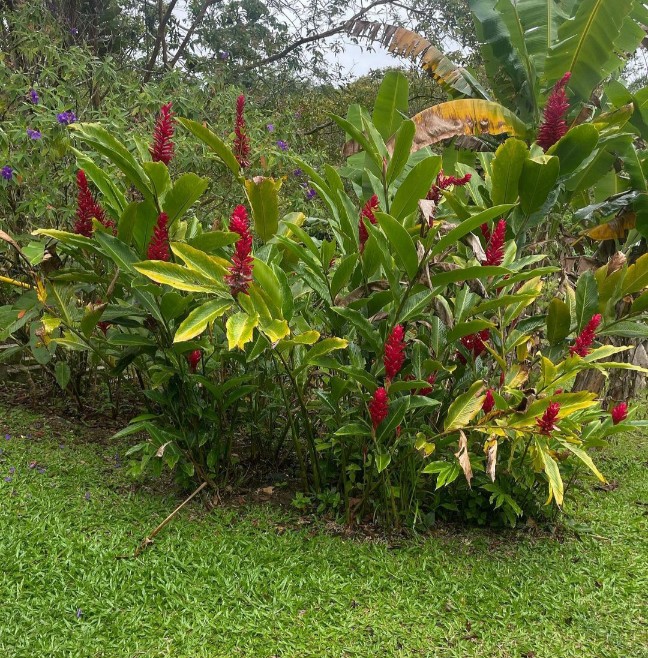
Origins of the Red Ginger Plant
The story of the Red Ginger Plant (Alpinia purpurata) is a fascinating journey that begins in the heart of the South Pacific. Native to regions such as Malaysia and Indonesia, this plant thrives in the warm embrace of tropical and subtropical climates. Its historical significance, however, extends far beyond its native lands. One place where the Red Ginger Plant has particularly left an indelible mark is the enchanting Hawaiian islands.
Distinctive Features of Alpinia Purpurata

As one gazes upon the Red Ginger Plant, it’s hard to ignore its extraordinary allure. While its vibrant red hue immediately captures attention, there’s more to this plant than meets the eye. This botanical marvel is known for its unique structure and impressive size. With the potential to reach towering heights of 6 to 15 feet, the Red Ginger Plant boasts long, glossy leaves that elegantly complement its stunning flower spikes. The inflorescences, composed of tightly packed individual flowers, create a visual spectacle that draws the gaze of both humans and pollinators, infusing any landscape with vibrancy and life.
Traditional Uses of Red Ginger Plant

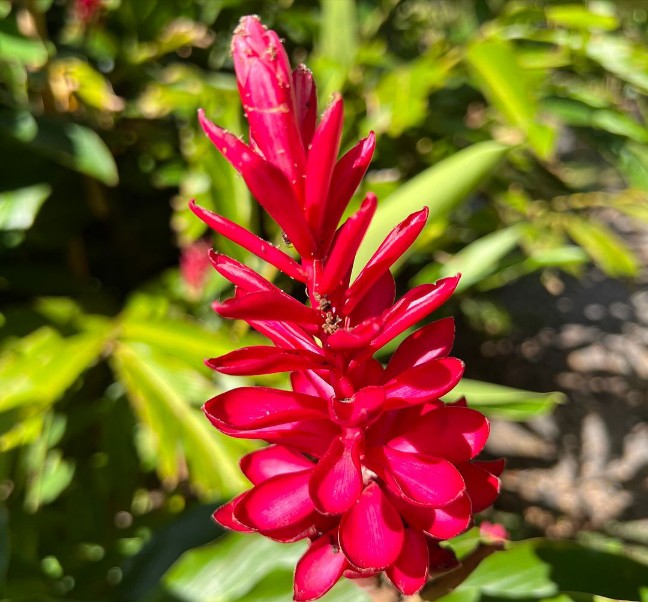

The Red Ginger Plant (Alpinia purpurata) is not only a striking botanical wonder but also holds a special place in various cultures due to its traditional uses. Across different regions, this vibrant plant has been cherished for its cultural significance and valuable contributions to daily life. Let’s explore the traditional uses of the Red Ginger Plant and the ways it has enriched human experiences for generations.
Symbolism and Cultural Significance
In Hawaiian culture, the Red Ginger Plant carries deep symbolism. Known as “ʻawapuhi ʻulaʻula,” it is revered for its connection to love, beauty, and vitality. This symbolism makes the plant an essential part of various ceremonies and celebrations. From weddings to hula dances, the vibrant red color of the plant’s flowers is used to convey profound emotions and honor special occasions.
Decorative and Ornamental Purposes

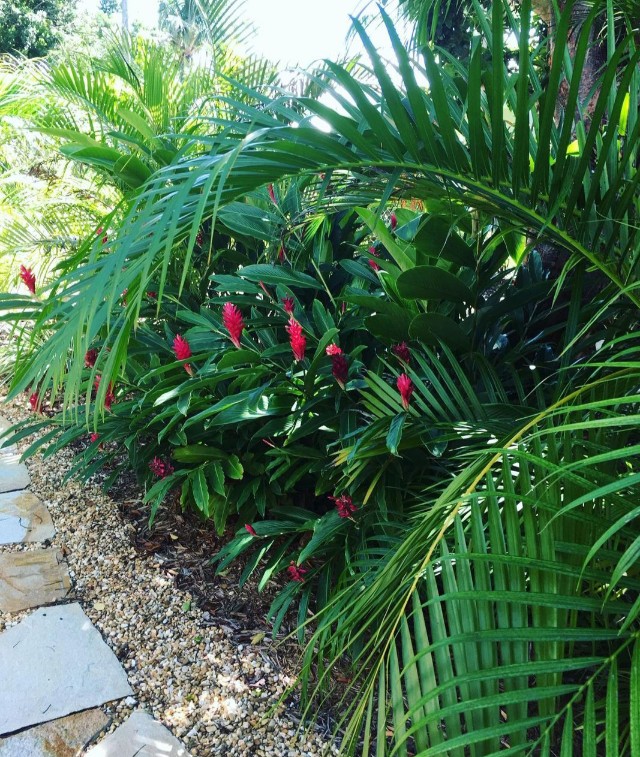
The striking appearance of the Red Ginger Plant’s inflorescences makes it a natural choice for decorative and ornamental purposes. In traditional settings, the plant’s flowers are often used to create stunning leis, garlands, and floral arrangements. These arrangements add a touch of elegance to ceremonies, welcoming guests with vibrant colors and the enchanting fragrance of the Red Ginger’s blossoms.
Medicinal Uses and Herbal Remedies

Beyond its visual appeal, the Red Ginger Plant has found its way into traditional medicine practices. In some cultures, its rhizomes are used to create herbal remedies with potential health benefits. These remedies are believed to possess anti-inflammatory and antioxidant properties, which are valued for their potential to address various health concerns.
Aromatherapy and Fragrance
The aromatic qualities of the Red Ginger Plant have led to its use in aromatherapy and fragrance-making. The plant’s flowers emit a delightful and invigorating scent that can elevate the ambiance of spaces. The essence of the Red Ginger’s fragrance is harnessed to create perfumes, essential oils, and scented products that offer a refreshing and calming experience.
Culinary Delights
While not as extensively used in culinary practices as common ginger, the Red Ginger Plant’s flowers do find their way into select dishes. The mild, floral flavor of the blossoms adds a unique touch to culinary creations. From garnishing salads to adorning desserts and infusing beverages, the flowers bring a visual and gustatory delight to the dining table.
Rituals and Offerings
The Red Ginger Plant’s connection to cultural rituals and offerings is profound. In some cultures, the plant is used as an offering in religious ceremonies and rituals. Its vibrant flowers are seen as a gift to deities or spirits, symbolizing reverence and gratitude for nature’s abundance.
Traditional Crafts and Artistry
The beauty of the Red Ginger Plant has inspired traditional artisans and craftsmen to incorporate its elements into their creations. From intricate weaving to vibrant dyeing techniques, the plant’s parts have been utilized in crafting textiles, baskets, and other cultural artifacts. This practice not only preserves traditional techniques but also honors the natural world.
Health Benefits of Red Ginger Plant



The Red Ginger Plant (Alpinia purpurata) is not only a captivating botanical specimen but also a source of potential health benefits. Beyond its vibrant appearance and cultural significance, this tropical plant has been recognized for its medicinal properties and contributions to holistic well-being. Let’s delve into the various ways the Red Ginger Plant may offer valuable health benefits.
Anti-Inflammatory Properties
One of the notable health benefits attributed to the Red Ginger Plant is its potential anti-inflammatory properties. The plant contains bioactive compounds that have been studied for their ability to reduce inflammation in the body. These compounds may help mitigate the effects of inflammatory processes, which are often associated with chronic conditions such as arthritis and certain autoimmune disorders.
Antioxidant Boost
Antioxidants play a crucial role in neutralizing harmful free radicals in the body. The Red Ginger Plant is believed to contain antioxidants that help protect cells from oxidative stress and damage. By scavenging free radicals, these antioxidants contribute to overall cellular health and may have a positive impact on aging and the prevention of various diseases.
Digestive Aid
Traditionally, the rhizomes of the Red Ginger Plant have been used to address digestive discomfort. It’s thought that certain compounds in the plant may promote healthy digestion by stimulating the production of digestive enzymes and aiding in the breakdown of food. This potential digestive support can contribute to better nutrient absorption and gastrointestinal comfort.
Immune System Support
The immune system is a complex network that defends the body against harmful pathogens. Some studies suggest that the Red Ginger Plant’s bioactive compounds may have immune-modulating effects, helping to strengthen the body’s natural defense mechanisms. Incorporating the plant into one’s diet or wellness routine may contribute to overall immune system health.
Pain Relief
The anti-inflammatory properties of the Red Ginger Plant may also extend to pain relief. In traditional medicine, the plant has been used to alleviate pain associated with conditions like arthritis and muscle discomfort. While further research is needed to fully understand its pain-relieving mechanisms, the plant’s potential as a natural pain management remedy is promising.
Respiratory Health
Certain compounds found in the Red Ginger Plant have been explored for their potential benefits in respiratory health. It’s believed that these compounds may help ease respiratory symptoms and promote lung health. As respiratory issues are common and affect many individuals, the plant’s natural properties are of interest for their potential to complement respiratory care.
Stress Reduction
The aroma of the Red Ginger Plant’s flowers has been linked to relaxation and stress reduction. Aromatherapy practices often utilize the plant’s fragrance to create a calming environment that may help reduce stress and anxiety. Inhaling the soothing scent of Red Ginger flowers can offer a moment of tranquility in today’s fast-paced world.
Skin Health
The Red Ginger Plant’s potential antioxidant and anti-inflammatory properties also extend to skincare. Some skincare products incorporate the plant’s extracts for their potential to promote healthy skin by reducing oxidative stress and inflammation. These properties may contribute to a more youthful and radiant complexion.
Consultation and Considerations
While the Red Ginger Plant holds promise as a source of health benefits, it’s important to approach its use with caution. As with any botanical remedy, consulting a healthcare professional is advisable, especially if you have underlying health conditions or are taking medications. It’s essential to ensure that the plant’s potential benefits align with your individual health needs.
Cultivating Red Ginger

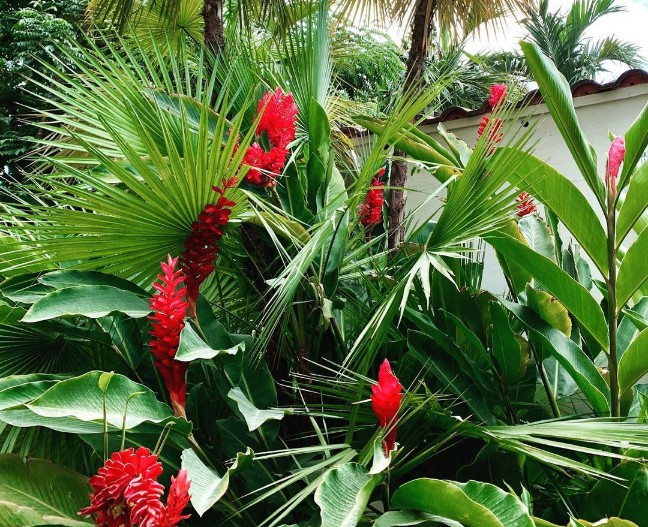
Choosing the Right Location
The journey of cultivating the Red Ginger Plant begins with a crucial decision: choosing the right location. This plant has a preference for partial shade, making it an excellent candidate for understory planting. However, the consideration doesn’t stop there. To ensure the plant’s well-being, it’s essential to provide protection from strong winds, which can easily damage the delicate flowers and foliage that contribute to the plant’s elegance.
Planting Process and Soil Requirements
Planting the Red Ginger Plant is a meticulous process that requires attention to detail. The first step is to select well-draining, nutrient-rich soil. Enhancing the soil’s fertility with organic matter can create an optimal environment for the plant’s growth. When it comes to the rhizomes, these underground stems should be planted horizontally, with their buds positioned just below the surface. Adequate watering after planting is crucial to encourage the rhizomes to establish themselves in their new home.
Watering and Maintenance
As any gardener knows, proper watering is a cornerstone of successful plant care. The Red Ginger Plant is no exception. Consistent and thorough watering is essential for maintaining the plant’s health, especially during dry periods. Providing adequate moisture can contribute to robust flowering and overall vitality. Additionally, applying a balanced fertilizer every few months can help ensure the plant receives the necessary nutrients for optimal growth.
Varieties of Red Ginger Plant
Diving deeper into the captivating world of the Red Ginger Plant reveals a diverse array of species and cultivars, each possessing its own unique characteristics. While the common thread among them is the captivating beauty of the plant’s flowers, there’s a spectrum of colors to explore. From deep and rich reds to delicate pinks and even pristine whites, the variations within the Red Ginger Plant family offer a multitude of options for tailoring the plant’s presence to different landscape themes and design preferences.
The Red Ginger Plant’s Role in Landscaping

The Red Ginger Plant isn’t merely a botanical specimen; it’s a versatile design element that has the power to transform landscapes. Its role extends beyond being a mere plant and transitions into that of a focal point or even a visual anchor. Whether it’s standing proudly on its own as a centerpiece or harmoniously blending into a lush tropical garden, the Red Ginger Plant’s vertical growth and striking blooms make it an invaluable asset for adding height, texture, and visual intrigue to outdoor spaces.
Harvesting and Utilization
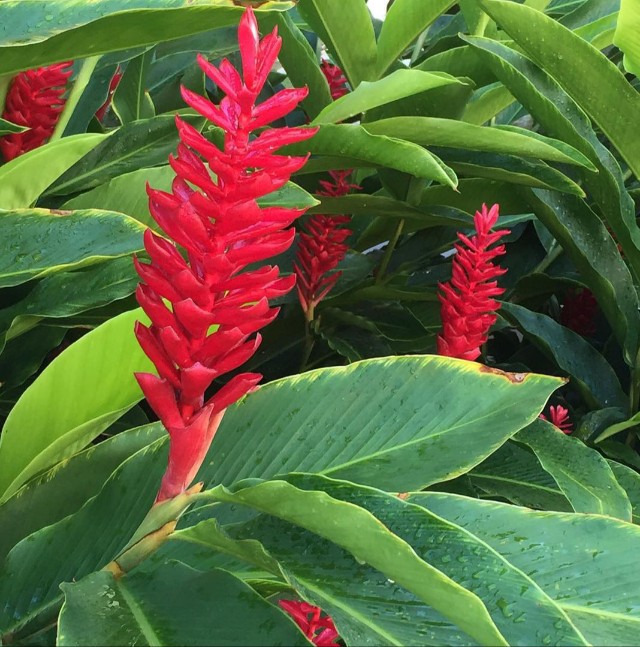

Floral Arrangements
The allure of the Red Ginger Plant isn’t limited to its presence in gardens and landscapes. It extends gracefully into the realm of artistic expression. The plant’s striking appearance makes it a sought-after choice for floral arrangements. Its flowers, known for their longevity, add a touch of the exotic to bouquets and centerpieces. Whether adorning wedding tables or breathing life into indoor spaces, the Red Ginger Plant’s blooms infuse an undeniable sense of tropical elegance.
Culinary Applications
While the Red Ginger Plant may not be as renowned in culinary circles as its close relative, the common ginger root, it still finds its way into select dishes. The plant’s flowers offer a delicate floral flavor that can elevate the taste and appearance of various culinary creations. From garnishing salads to embellishing desserts and even finding a place in refreshing beverages, the Red Ginger Plant’s flowers introduce an element of intrigue and surprise to the dining experience.
Potential Concerns and Cautions
While the journey of cultivating and enjoying the Red Ginger Plant is filled with wonder, there are practical considerations to keep in mind. First and foremost, it’s essential to recognize that the plant’s beauty conceals potential dangers. The Red Ginger Plant can be toxic if ingested, particularly for pets. Ensuring that it’s placed in a location inaccessible to curious animals is a responsible choice for pet owners. Additionally, the plant’s well-being is contingent upon proper drainage. Inadequate drainage can lead to root rot, a condition that can compromise the plant’s health and longevity.
The tale of the Red Ginger Plant is one of botanical fascination and human appreciation. From its origins in the lush rainforests of the South Pacific to its role in cultural ceremonies and contemporary landscapes, it serves as a testament to the beauty and complexity of the natural world. The Red Ginger Plant embodies both the delicate interplay between form and function and the enduring connection between plants and people.
FAQs About the Red Ginger Plant
Can the Red Ginger Plant thrive indoors?
Absolutely! While its natural habitat is in outdoor tropical environments, the Red Ginger Plant can thrive indoors when carefully tended to. Placing it in a pot near a sunlit window can mimic the conditions it favors in its native environment.
Is the plant’s vibrant color all year round?
Indeed, the vibrancy of the Red Ginger Plant’s flowers can grace your surroundings for an extended period. Its ability to maintain its striking color adds to its allure and the aesthetic enjoyment it brings.
What are some creative ways to incorporate Red Ginger flowers into recipes?
Exploring culinary creativity with Red Ginger flowers opens up a world of possibilities. Use them to garnish salads, infuse desserts with a subtle floral essence, or enhance beverages with a visually appealing touch.
Are there any pests that particularly affect this plant?
While the Red Ginger Plant is relatively resilient, it’s not immune to the occasional pest visitation. Aphids and mealybugs are potential nuisances. Regular monitoring and appropriate pest management strategies can help keep these unwanted visitors at bay.
how to grow red ginger plant?
While growing Red Ginger from seeds is possible, it’s not the most common or efficient method of propagation. The plant is typically cultivated from its rhizomes, which offer a more reliable and practical approach to successful growth.
how to care for red ginger plant?
Avoid direct sunlight, as it can scorch the leaves. Place the plant near a window with filtered sunlight or in a shaded outdoor area.
Keep the soil consistently moist, but not soggy. Water when the top inch of soil feels dry.


